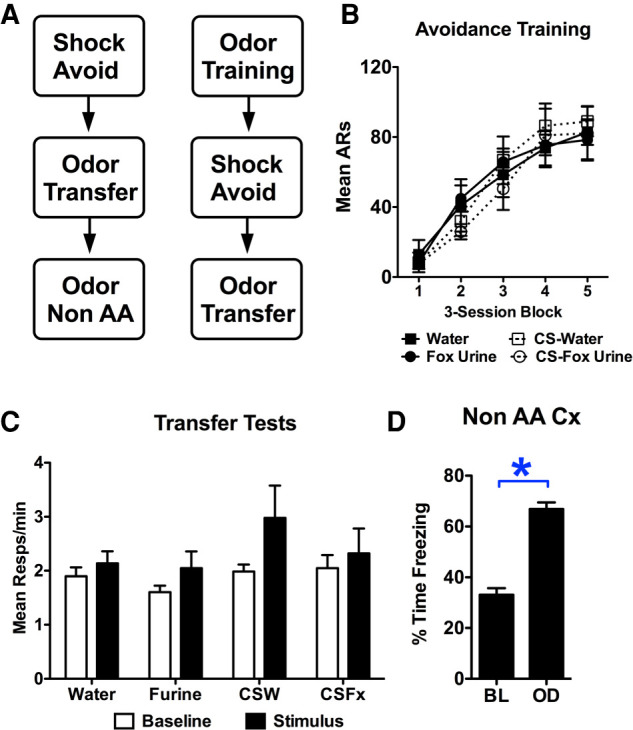Figure 2.

(A) The experimental design used to evaluate predator odor effects of freezing and active avoidance. (B) Avoidance responding for three-session blocks during the Sidman avoidance training phase. (C) Responses per minute during the pre-CS and CS periods for each group tested for aversive transfer. (Furine) fox urine, (CSW) CS water, (CSFx) CS fox urine. (D) Percent time freezing in a nonavoidance context (i.e., a standard Pavlovian chamber) during the baseline (BL) and odor presentation period (OD). Starting with samples of six rats per group, one animal was eliminated from each condition for poor performance with the exception of the water exposed control group, in which all six rats successfully acquired avoidance responding. Asterisks represent statistical significance at the 5% level.
